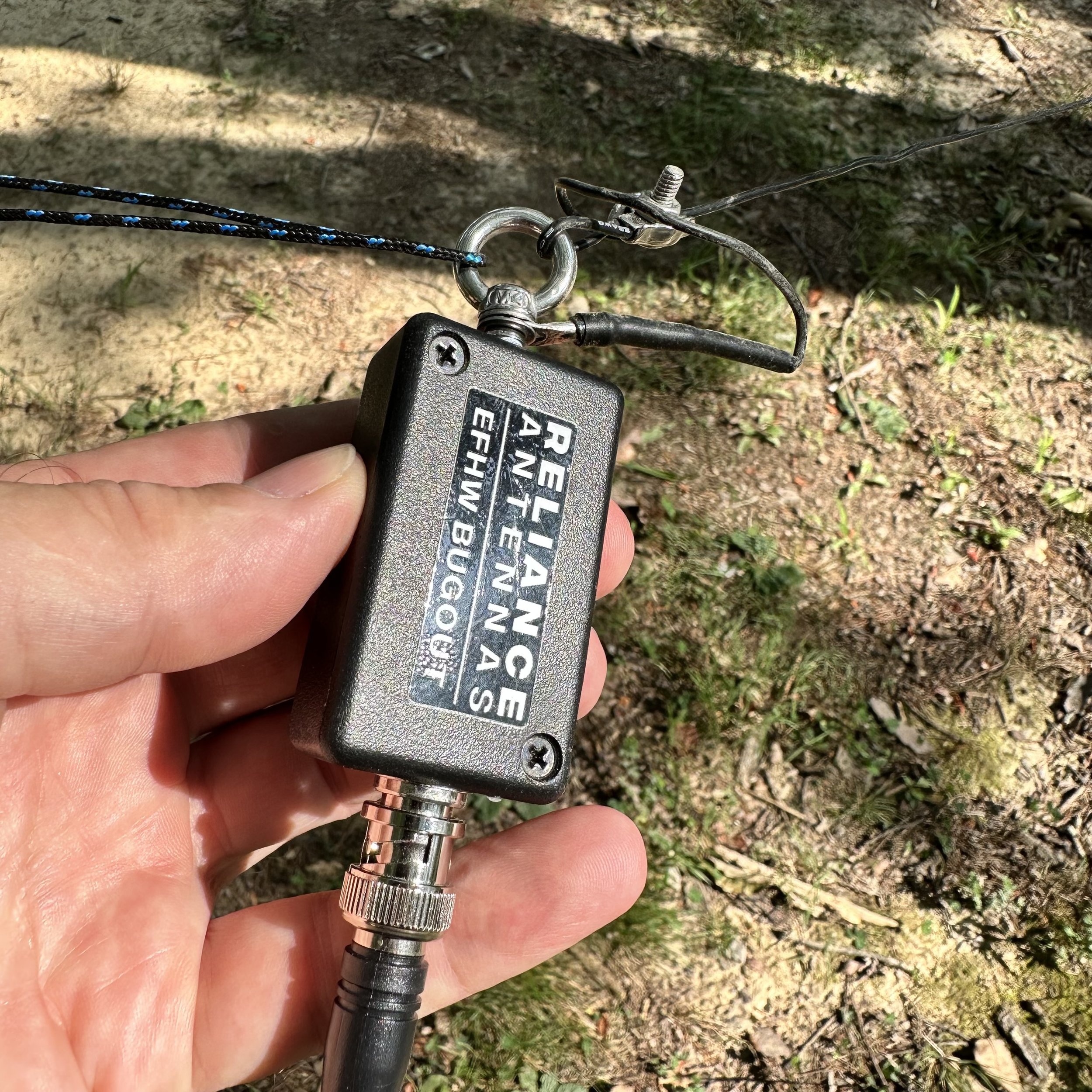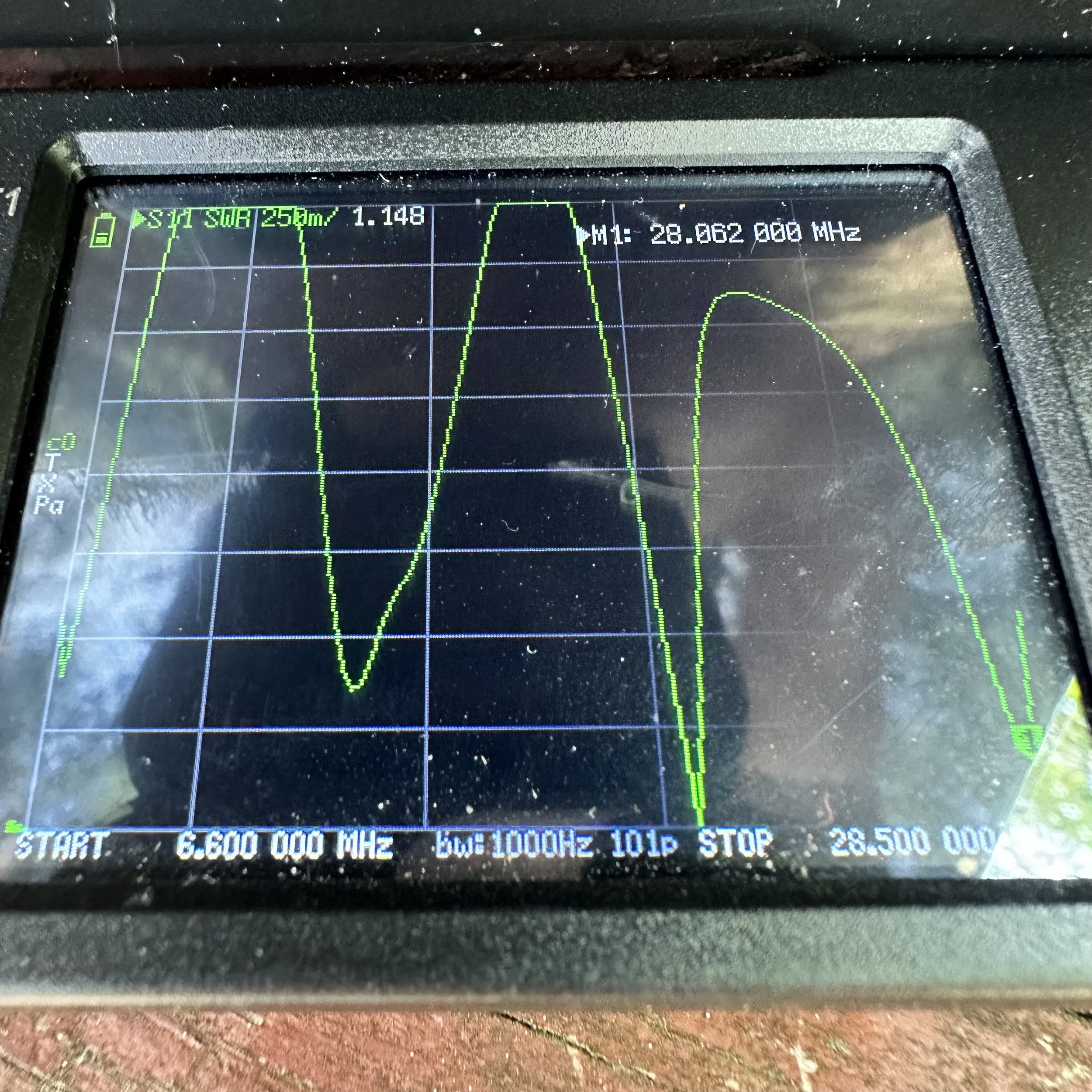Some days are better than others…
Today saw me putting the truck in the shop to get the water pump repaired as it gave up the ghost on the interstate. It got to ride on the big truck to the mechanic and I have been driving my back up truck ever since. The old white ford is a good truck that we normally relegate to shop duty for deliveries and such but for now it is my daily driver. This also means I have to transfer all my gear over from the Dodge to the Ford and I inevitably forget some stuff. This time it was the AUX cable so that I can run my phone through the stereo…So I have been wearing my AirPods instead. I also don’t have a bed cover like on the dodge so I can’t just leave my radios on the back of the truck and have to take them in the house when I am not using them. This is mildly frustrating since I like to use my truck for a POTA wagon and just have it constantly outfitted with the gear I use.
This is what the operation center looked like today. It is nice to sit in the shade and work some contacts when it isnt too hot. I still used the antenna on the truck mount and just ran the coax out into the grass. Today saw the sBitx V3 deployed again so I could work some CW as well as FT8 quietly while other people rode bikes and enjoyed lunch in the park. I wound up sitting on the hard shell case for the Argonaut as a sort of makeshift chair and it worked really well. I also sat the radio on its hard case to raise it up as well. What POTA activation would be complete without a cup of good chain store coffee? Lol…
As you can see, the antenna worked out quite well on the old ford. I was quite happy with the results even though it was thin on total contacts. I like the fact that I can simply back into a space and setup my antenna right there in just a couple of minutes. There are times that I wished I had a better antenna but you use what you brought and have fun. I did have fun so it is all good. I do have some really good wire antennas to work with but I don’t like trying to string them up in places like this. I am almost certain that it is against some sort of rule in the national parks.
Here is an interesting note about this activation. One of those fancy-smancy Tesla cyber trucks rolled into the parking lot while I was operating and I immediately got this broadband RF hash all over me radio. When he shut the truck down, the hash disappeared and as soon as he powered it back up, it returned. So I am convinced they need better RF shielding of something. You can see it on the display on my radio above.
I am still on the fence as to whether I like the aesthetic of the Tesla Cybertruck or not. Hard to say to be honest. I do like the power availability idea that you can POTA for days from it. It is battery powered after all… Haha…once you shut it down that is…
Until then I will be using my 36Ah battery. This is a Lithium Iron Phosphate battery and is shockingly light for its size and performance. I can run literally for days on this one cell without problem. You can even run several hours at 100 watts if you wanted to… I normally have this plugged into my shack for a backup power system in the event of power failure so that some of my radios continue to work. Mainly my VHF/UHF machines so I can talk to the locals either on the repeaters or via simplex should there be some sort of emergency. On some days though, I will take it to the field with me to make some POTA contacts and this was one of those days.
31 contacts in the log is a great day for me. I had so much fun and even got a bunch of DX into the log! What more can you ask for? Nice weather, ham radio, DX, POTA…it is almost more than you can handle!!! HaHa. Thanks for following along and I hope to see you again in the next one.
72
WK4DS

















































































































































































































































